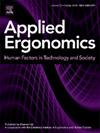三维计算机断层扫描行李安检中的图像增强评估
IF 3.4
2区 工程技术
Q2 ENGINEERING, INDUSTRIAL
引用次数: 0
摘要
新的计算机断层扫描和图像增强技术越来越多地用于机场的行李安检。目前的研究通过考察不同图像增强技术对威胁检测的影响,试图确定这些技术进步是否已经超越了人类的心理承受能力。61 名天真无邪的成年人参加了一项在线研究,并在接受模拟行李安检任务测试前接受了无目标搜索训练--除了三维图像外,这项任务还包括二维切片视图、材料剥离和缩放功能。与标准的三维图像相比,二维切片视图提高了威胁检测灵敏度,降低了响应标准,因为安检员发现了他们最初遗漏的危险物品,这可能是由于提高了解决叠加或识别边缘的能力。相比之下,材料剥离和缩放并没有影响灵敏度、标准或安检员对其反应的信心,这表明它们并没有带来额外的信息价值。本文章由计算机程序翻译,如有差异,请以英文原文为准。
An evaluation of image enhancements in three-dimensional computed tomography baggage screening
New computed tomography and image enhancement technologies are increasingly used in cabin baggage screening at airports. The current work sought to establish whether these technological advancements had pushed beyond human psychological capability by examining the impact of different image enhancements on threat detection. Sixty-one naïve adults participated in an online study and received targetless search training before being tested in a simulated baggage screening task - in addition to three-dimensional images this task incorporated two-dimensional slice views, material stripping and zoom functionality. The two-dimensional slice view improved threat detection sensitivity and lowered response criterion relative to a standard three-dimensional image, as screeners found dangerous items they had initially missed, likely due to improved ability to resolve superposition or identify edges. In contrast, material stripping and zoom did not impact sensitivity, criterion or screeners’ confidence in their responses, suggesting that they contributed no additional informational value.
求助全文
通过发布文献求助,成功后即可免费获取论文全文。
去求助
来源期刊

Applied Ergonomics
工程技术-工程:工业
CiteScore
7.50
自引率
9.40%
发文量
248
审稿时长
53 days
期刊介绍:
Applied Ergonomics is aimed at ergonomists and all those interested in applying ergonomics/human factors in the design, planning and management of technical and social systems at work or leisure. Readership is truly international with subscribers in over 50 countries. Professionals for whom Applied Ergonomics is of interest include: ergonomists, designers, industrial engineers, health and safety specialists, systems engineers, design engineers, organizational psychologists, occupational health specialists and human-computer interaction specialists.
 求助内容:
求助内容: 应助结果提醒方式:
应助结果提醒方式:


